Gold cocoons
These are from my friend Howard in Hawaii. They are a strain of Bombyx mori that throws gold-colored cocoons. They are not the same as the kind that has the peach and gold colors; these are much more of a true chrome yellow.
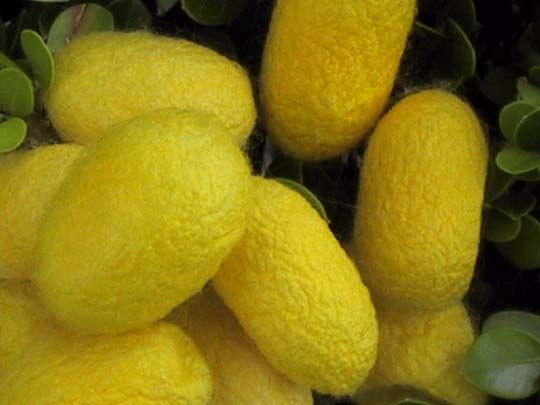
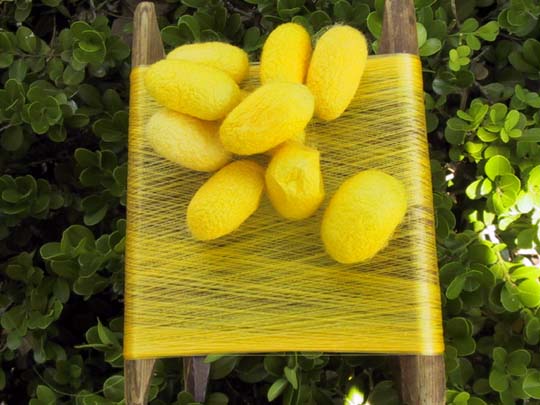
This stuff has the most amazing color. Unfortunately, like with the peach, it’s all in the sericin, which means that the silk would degum to be white when finished. There are some applications where the silk is left raw, and there are ways to degum by fermentation that leave the color intact; I’m investigating how to make it work.
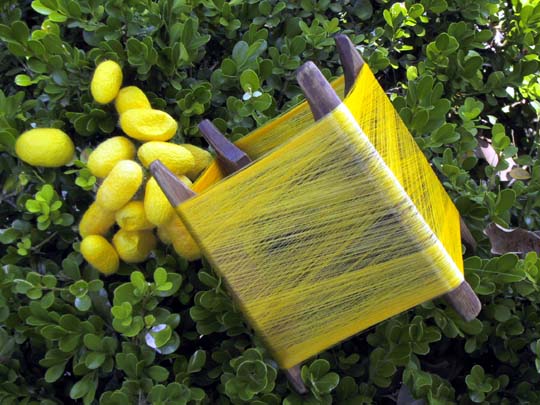
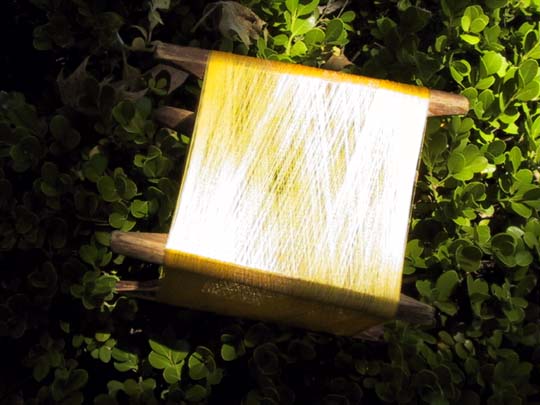
This is what happens when the sun hits it. The side of the itomaki makes such a solid reflective surface that I was able to cast a little beam of light onto the side of the house.
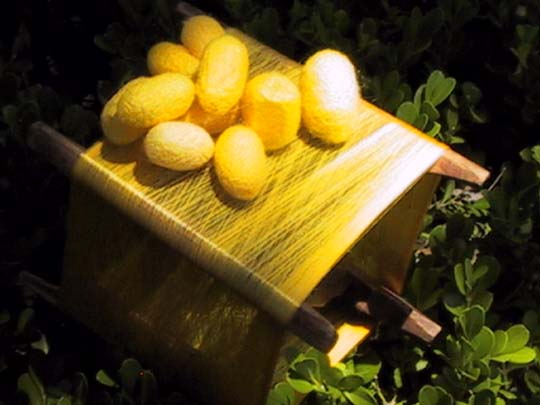
The reel with the cocoons again. The cocoons almost wash out on the sun-side, because they reflect the light so much. This was not taken in a weird patch of shade; it’s under dappled light from an overhanging tree, but the whole area is quite bright. The light on the silk just makes the camera freak out a little, and it darkens everything to compensate.

How absolutely amazing. Thanks for posting these pictures, they have really changed my view of silkworms (er, not that I had an strong pre-conceived ideas that is… though I’m almost sure I’d never associated them with the colour of chrome yellow.)
Incredible, how beautiful a yellow that is and the reflectivity is remarkable!
Thank you for sharing the information and the lovely photos.
WOW! What a gorgeous color.
puts a whole new thought into the idea of spinning silk into gold. . .
I had this little critter come to die with me
would they be a fibre moth?
I’d need to see him from the top. From that view, I can’t tell if it’s a Polyphemus moth or an IO moth. They’re both silkmoths, but IO doesn’t actually make any silk.
the spots might make him an i-o?
he’s such a nice gold…
think i need to plant a mulberry tree!
Re: the spots might make him an i-o?
Yup, that’s an Io moth!
Mulberry isn’t for these guys – mulberry is for the domesticated species. But, if you do decide you want some of those, let me know and I can mail you eggs.
Thank you!
But think i need to install a food source first,
No good having a critter I can’t feed them.
we used to live under a mulberry tree down in Minneapolis
is there any species that is better than any others?
Then I will start raising worms! and moths!
he was so sweet got stuck in a down pour sheltering on a bale of straw.
Re: Thank you!
For the domesticated worms, white mulberry is best, as they have good moisture level and are easier for the young ones to eat. Black produces a tastier berry, but are a little more tough.
Fruitless white will grow fastest and make the most leaves. Mulberry comes in boys and girls – the boy trees are the ones sold as “fruitless” because they only produce pollen.